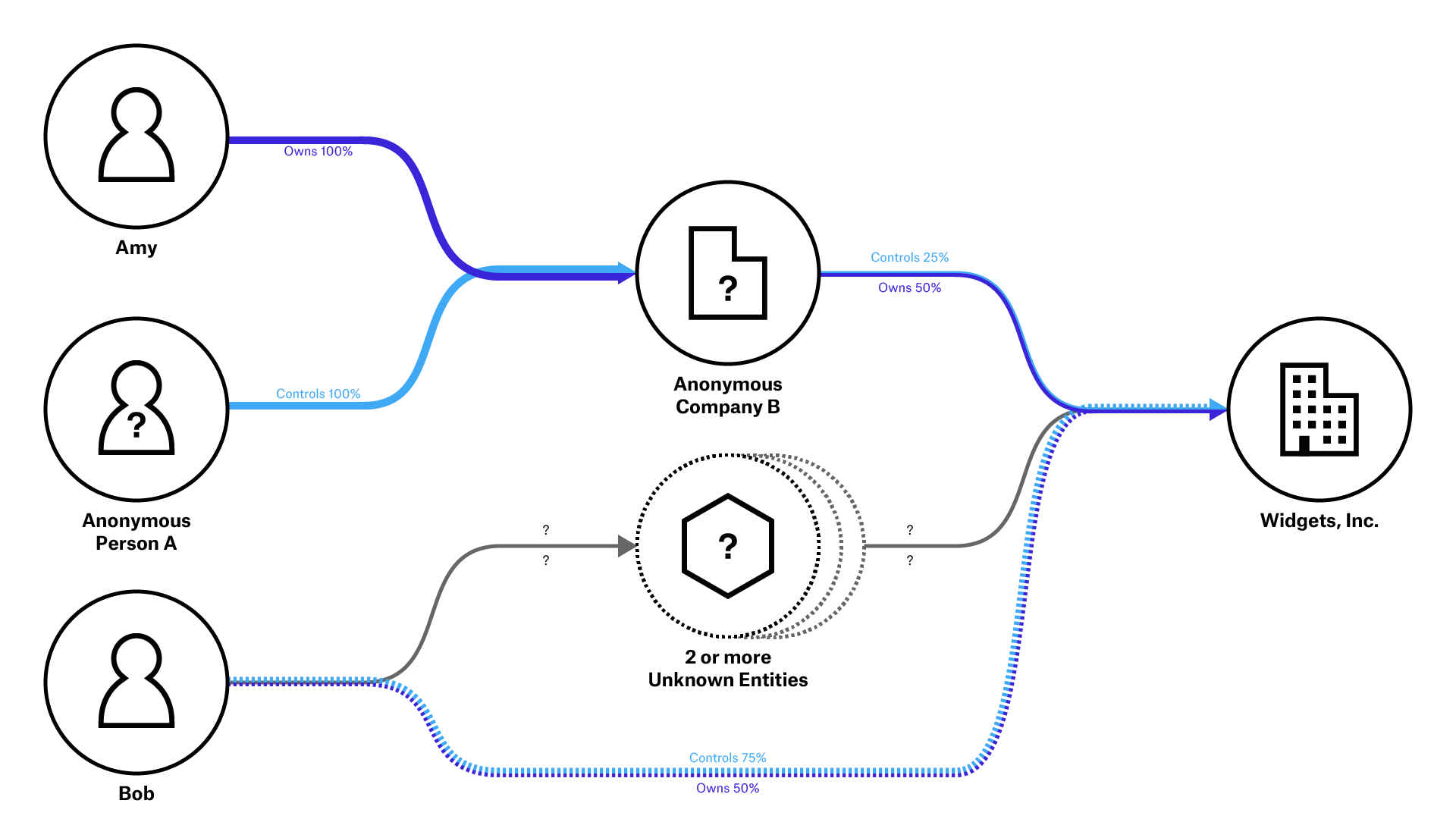Beneficial Ownership Visualisation System
Introduction to BOVS

The above diagram shows an example of a BOVS diagram. This describes a situation where:
- We are interested in who ultimately owns and controls Widgets, Inc.
- There is a Company that owns 50% of Widgets, Inc., and controls 25% of it (e.g. has 25% of the voting rights). Its name has not been declared, so we label it Anonymous Company B.
- Amy owns 100% of Anonymous Company B, and therefore owns 50% of Widgets, Inc.
- Another Person controls 100% of Anonymous Company B, and therefore controls 25% of Widgets, Inc. The name of this other Person has not been declared, so we label them Anonymous Person A.
- Bob has an interest in Widgets, Inc. via an unknown chain of interests in at least two intermediary entities. Although the ownership chain contains unknown entities, the ultimate result is clear: Bob owns 50% of Widgets, Inc., and has 75% control of it.
Benefits
The BOVS ensures diagrams will be easy to understand, because:
- all of the diagrams will follow a consistent logical approach;
- the diagrams will be consistent with those published by Open Ownership and many other organisations;
- the Design principles, which were followed in the creation of the BOVS, are available and help avoid accidental ambiguities.
The BOVS helps save time, because:
- beneficial ownership structures can be more complex than they appear, especially as they often contain unknowns, and visualising these clearly without using BOVS can be surprisingly challenging;
- the BOVS is designed to be applicable to any situation that can be described by the Beneficial Ownership Data Standard (BODS).
How to draw BOVS Diagrams
The BOVS includes a number of rules and features, and they have been divided up to make it easier to get started. A few Core Rules should always be followed, but the Optional Features can be followed on a case-by-case basis. Open Ownership provides a number of resources to help create BOVS diagrams.